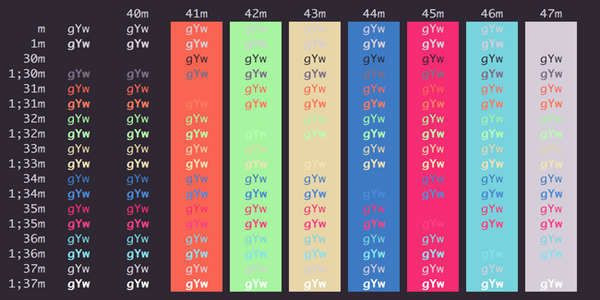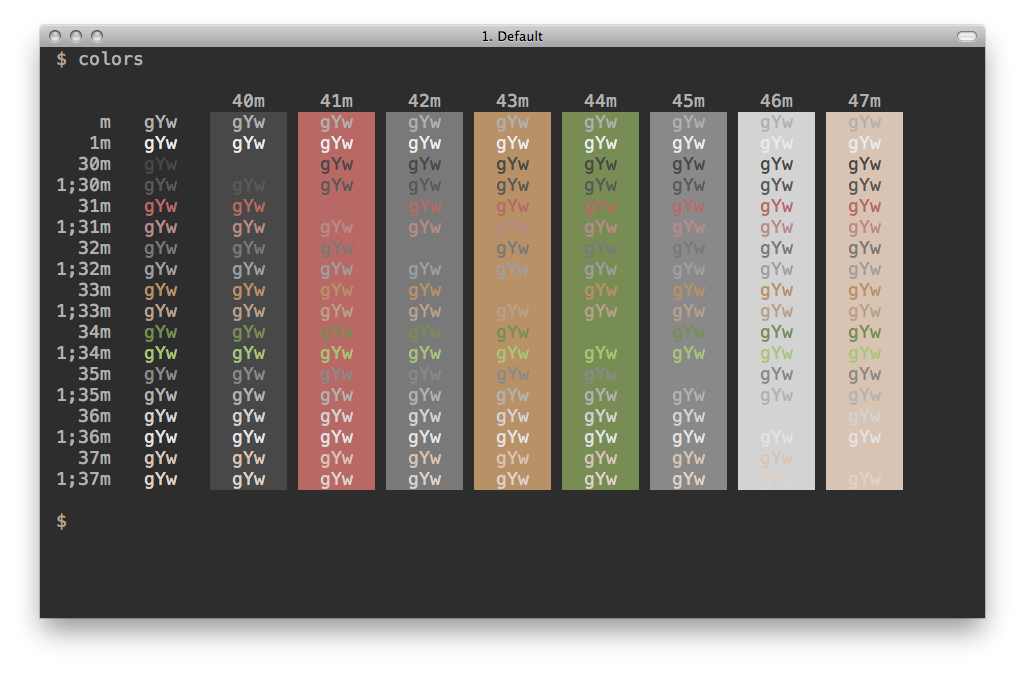

The first thing is that in a character application there is an environment variable called TERM that tells the terminal program. Now today, you set most of this with a profile page in a modern graphical application, but the way this works for character applications is way back to the 1980s. Configuration of all this via environment variables and escape codes in MacOS Terminal and iTerm2 There are many variations, one that I like is solarized8 which is tuned for 8-bit colors rather than the 4-bit of regular solarized. Of course, ever character application in your system has to be told to use this, but I would suggest it as the default colors for mostly uses. The main advantages to talk technically is that it has reduced brightness contrast but retains hue contrast so that you get good readability and not glaring bright lights. They are quite a bit less contrasty and therefore easier to read in normal light situations. The miracle is they use the same color 16 carefully chosen colors. He's a graphics designer and 8 years or so ago, he designed two beautiful schemes, Solarized light and dark. This is where the wonder Ethan and his solarized color scheme comes in. The reason is that the 256 colors are predefined, so if you are in a real 24-bit or even 40-bit scheme, with 16-bit, you can select exactly the colors that you want. So, when I first started using this with MacOS Terminal, the best thing to do was to get color schemes it is unintuitive, but lots of time 16-bit color is better than 256-bit color.

However, one advance is that if you have a modern computer is that you can actually pick which 16 colors to use in the modern 24-bit color (8 bits per color or millions of colors in Apple speak) or 40-bit color (aka High Dynamic Range or HDR or 10 bits per color or billions of colors in Apple speak). And if you can believe if MacOS Terminal still only supports 16 different colors. And back in the 1980s that was pretty amazing.
#BEST ITERM COLOR SCHEMES PC#
So going back to ancient history, the original IBM PC was either monochrome or had the very cool Color Graphics Adapter (CGA). Key to this is using the MacOS Terminal or for power uses, iTerm2. OK, bear with me on this one, but one of the fun things is to turn a fancy graphical interface like the MacOS (or iPadOS for that matter) back into a 1970s character terminal. Whew that's a lot! Starting with 4-bit vs 8-bit vs 24-bit color
#BEST ITERM COLOR SCHEMES CODE#
Do you know how sometimes one thing leads to another? In my case, it started with climate change which leads to 90 degree plus days in Seattle which leads to wanted to sit outside instead of swelter indoors which leads to wanting to write some code outside which leads to trying to get better colors which leads to (finally!) understanding terminal colors.


 0 kommentar(er)
0 kommentar(er)
